|
|
Post by starr on May 2, 2017 16:50:41 GMT 12
My finger slipped. Not that long ago. It was 1957.
|
|
|
|
Post by gibbo on May 2, 2017 17:07:29 GMT 12
I'd been led to believe the crash site was on the farm literally across the road from the end of the runway. Is that not the case then? No, it's about 2.6km from the south end of the main runway. I can confirm the location as the accident record had an excellent selection of photos both ground & airborne that give a clear view of nearby houses, the road, contours of the paddock etc & guess what, with the lack of any development on the site till now, those houses, road & contours all still exist exactly as per the photos. There was also a view from the crash site back towards the hangars at WP. I took a bunch of notes from photos etc to enable me to pinpoint the site then visted the site when back home to confirm what I saw and everything matched perfectly. With the development happening now those reference points will permanetly disappear. |
|
|
|
Post by John L on May 2, 2017 18:58:31 GMT 12
Is this the spot 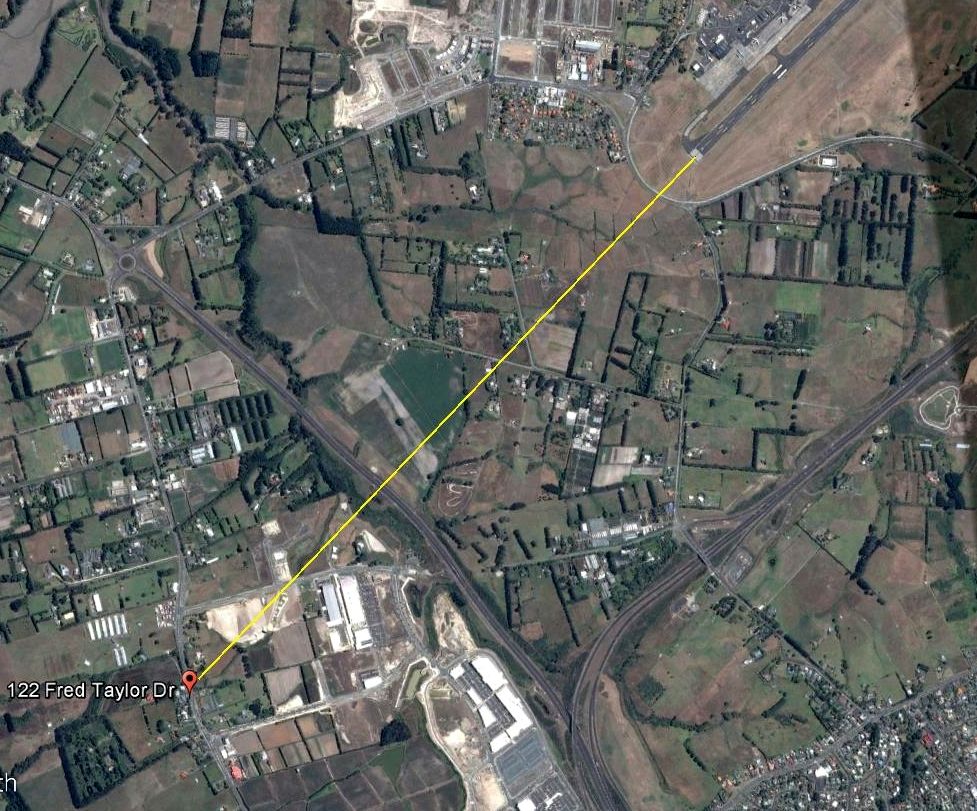 |
|
|
|
Post by gibbo on May 2, 2017 19:52:43 GMT 12
Is this the spot  You've got it pretty much got it on the head! If you move the pin just a smidge back along the yellow line toward WP so that it's on the right-hand side of the road (old SH16) that's the paddock it came to rest in. The a/c pretty much followed the yellow line, impacting mostly on it's underside after initially hitting a hedgerow in the area that's seen above under development (light coloured patch). It started breaking up as it went through what is still a rising paddock (again following the yellow line) leaving a wreckage trail. It came to a rest just to the right of, and below, the two houses visible immediately just above & to the right of the pin head. Where those two houses are is pretty much where the Sinton farm house was. Any guidance as to how to add that map, I could mark it & post it but I just can't work it out. |
|
|
|
Post by shorty on May 2, 2017 21:30:36 GMT 12
Just how old are you starr?
|
|
|
|
Post by Deleted on May 3, 2017 10:08:23 GMT 12
|
|
|
|
Post by emron on May 3, 2017 22:02:03 GMT 12
It may have been an Army aircraft but the mission looks to have been Navy business and the fastest way to courier top secret documents. There was a lot going on around here in early June and lots of paperwork too.
May-21 Vice-Admiral Ghormley arrived in Auckland to set up his headquarters.
June-3 work was begun on a 500-man camp at Mechanics Bay to provide a receiving barracks for the area.
June 4-8 Battle of Midway.
June-10 A U.S.Navy officer took over duties at Noumea as Captain of the Port. With him were 8 other officers and 143 men whose purpose, in addition to forming an administrative unit, was the installation of underwater defenses.
June-12 Four troopships escorted by cruiser and destroyer arrive Auckland carrying US Infantry.
June-14 USS Wakefield arrives at Wellington carrying first contingent of Marines.
There was a flurry of work going on around the North Island completing the camps to house the new arrivals as well as onstruction of port facilities. But plans would soon change and Noumea would be chosen as the main base of operations and headquarters relocated there within 5 months.
|
|
|
|
Post by Dave Homewood on May 4, 2017 0:43:14 GMT 12
Why would you be couriering top secret documents with a full bombload onboard?
|
|
|
|
Post by Bruce on May 4, 2017 10:27:21 GMT 12
The bomb load has always been the weird bit in this story. Even if it was being ferried to the front line, it wouldnt have been bombed up. Did someone at Whenuapai have some dodgy bombs that needed disposal perhaps?
|
|
|
|
Post by Dave Homewood on May 4, 2017 12:42:18 GMT 12
The crew were exceedingly cagey before they took off. They had some serious engine troubles with one of the engines apparently but they would not let the RNZAF personnel near to lend a hand in repairing it. Apparently that engine was still running rough according to eye witnesses when it took off. So to be supposedly flying to Melbourne with one engine playing up is pretty stupid. Flying in those conditions with a full bomb load leads me to suspect there's something very fishy about this flight all together. They had to have had some sort of target in mind, probably off our cost. It would be interesting to look into what shipping was crossing the Tasman at the time and who was onboard.
|
|
|
|
Post by pjw4118 on May 4, 2017 16:46:22 GMT 12
I will try and get up there over the weekend to see whats about.It seems very strange that a bombed up B17 plus passengers took off. By then we had Hudsons to deal with any local foreigner
Are we sure that there were bombs aboard ? My parents talked of that night often , they lived in Sandringham and I am sure that they spoke of several big bangs , not just one.
The City Council diggers should be testing for residue anyway.
|
|
|
|
Post by emron on May 4, 2017 23:43:58 GMT 12
The official report must have said whether there were bombs aboard or not. If there was a convoy crossing the Tasman that day, then maybe this flight was bombed up in case they were requested to provide air cover for it. But this extra weight was going to reduce their range and speed so that wouldn't have been very effective and especially while flying in the middle of the night.
|
|
|
|
Post by pjw4118 on May 5, 2017 15:38:44 GMT 12
I visited the dig today and thanks to Simon Bickler had a good look and was made most welcome. A lot of 50 cal cartridge cases have been found together with a sole 30 cal. While I was there the 'digger' in fact an ex RAF man unearthed a heavy multi strand cable like an earthing strap, complete with its own 50 cal shell. A fuel smell still remains in the hole. 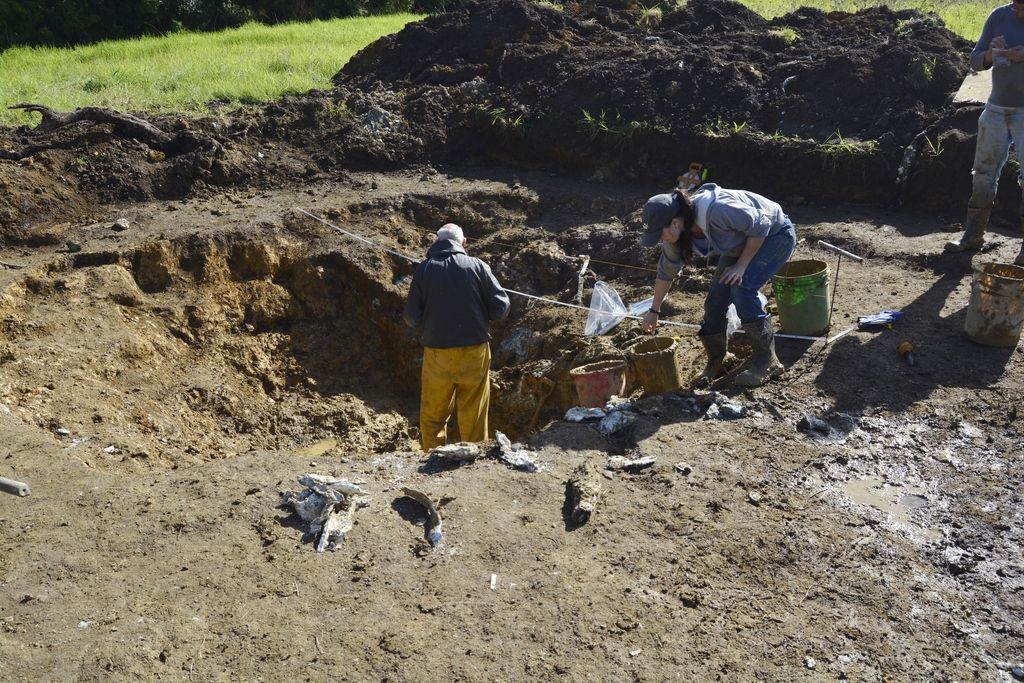 "  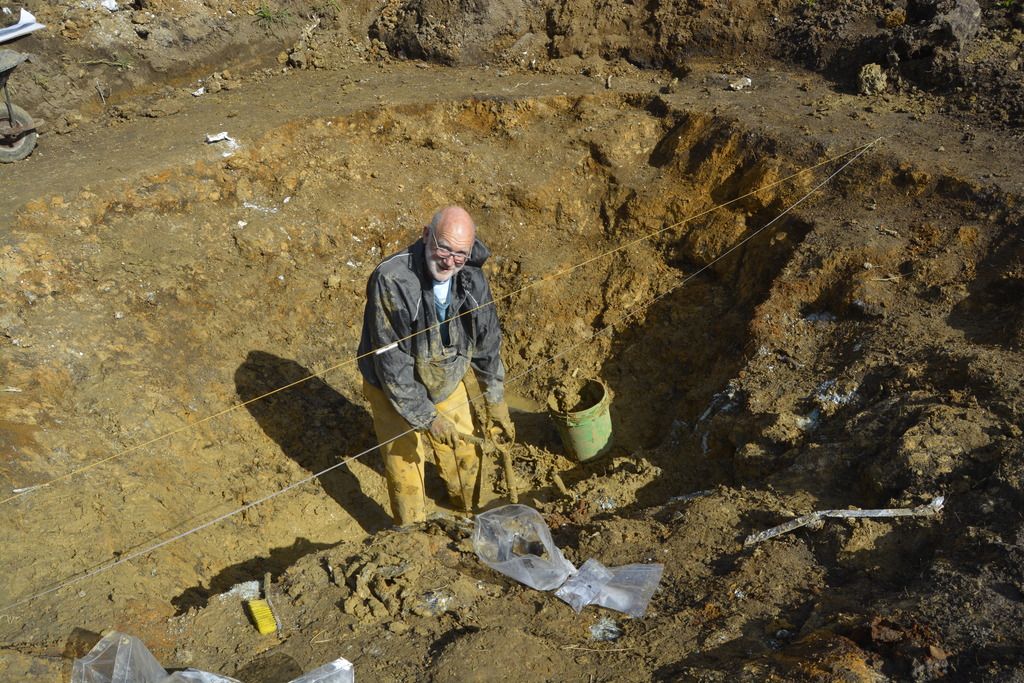 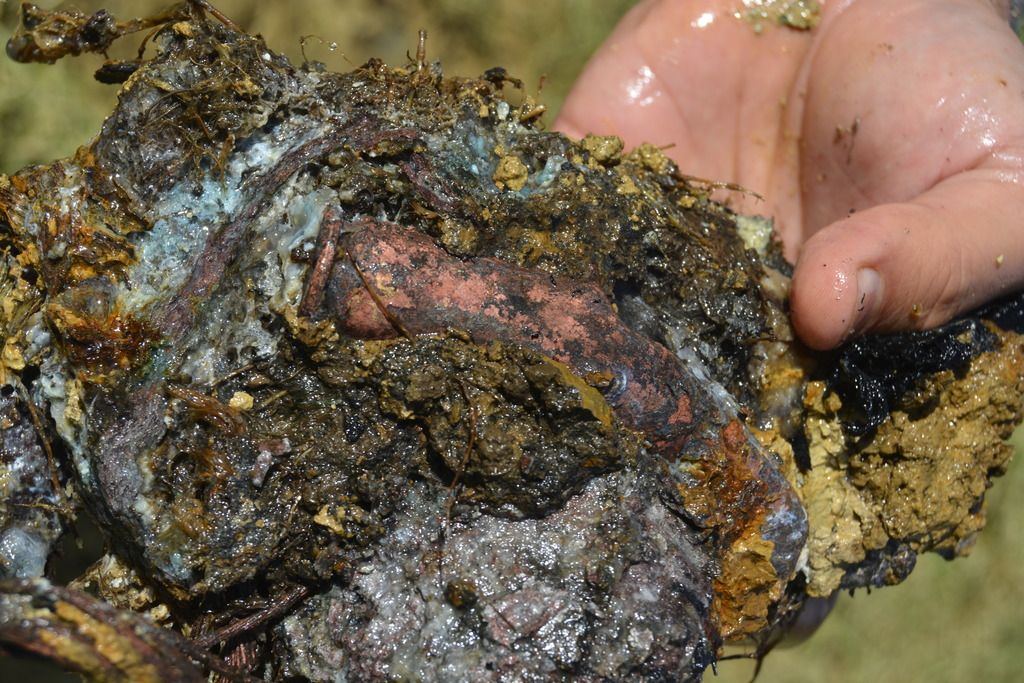 And this is the view from the W End of Whenuapais runway looking up to the crash site, which is midway between the pylon and large trees on the right 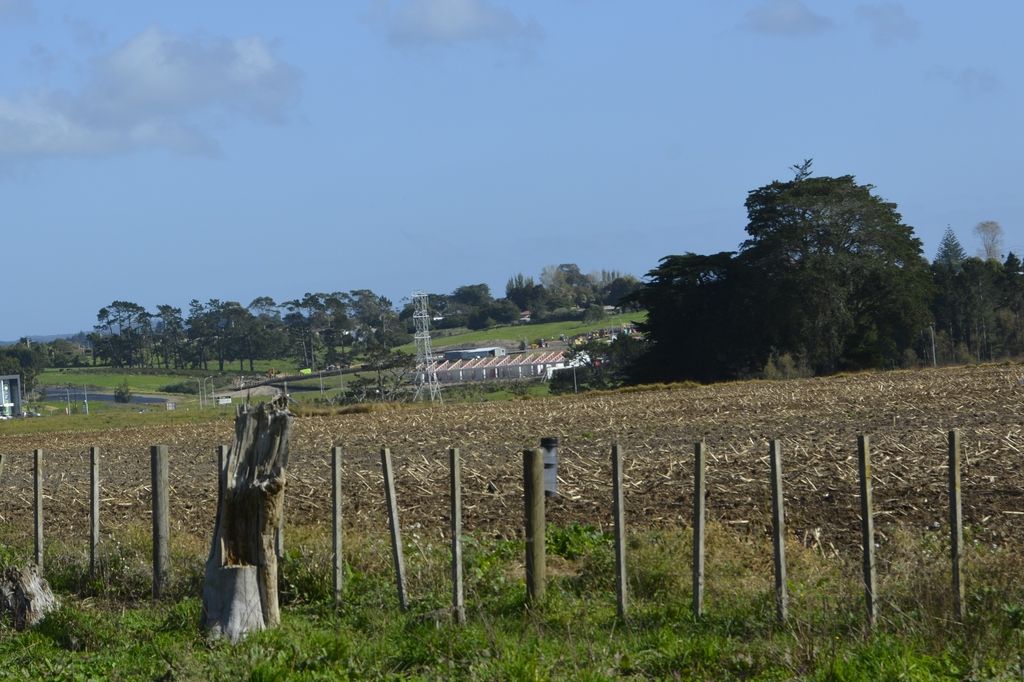 |
|
|
|
Post by isc on May 5, 2017 21:47:44 GMT 12
There was a single 30 cal gun in a dorsal position at the wireless operators station. Depending on which model, some also had a pair of fixed 30 cal guns in the nose. isc
|
|
|
|
Post by emron on May 6, 2017 19:15:54 GMT 12
I haven't yet fully read back through this thread to see if this has been discussed before but I came across earlier mention of Ewing Stephens article about the B-17 41-2667 accident. I've now dug out my copy of NZ Wings October 1993. According to this account there were four 500lb bombs aboard, two exploded in the subsequent fire and these caused the noise and surrounding damage. The other two were thrown clear and one is shown lying amongst the wreckage, in the photo accompanying that article. There is also talk that one crew member may have survived the crash and carried another out of the wreck, only to be killed soon after in the first explosion.
|
|
|
|
Post by pjw4118 on May 7, 2017 15:46:21 GMT 12
Ron , Shamus ( page 4 of this post ) has an eyewitness account , its worth reading , and confirms that one survived , to be killed going back to rescue another. I certainly would love to see any crash site photos that are referred to earlier on in this thread.
Thinking again about the bomb question , it was only 6 months after Pearl Harbour and all of the Pacific from Hawaii down through Fiji , NZ and Australia would have been considered a battle zone . The Japs could pop up anywhere so naturally you would send armed aircraft into the zone ,, think targets of opportunity. The Navy would certainly have sent their cruisers, destroyers fully armed so why wouldnt the USAAF do the same with their aircraft?
|
|
|
|
Post by emron on May 7, 2017 22:44:27 GMT 12
Peter, I've just finished reading thru the thread now and found that Dave posted the NZ Wings article back on Page 1 if you haven't also discovered it. I'm now going to delve more into the background of this flight in the Army Air Force and US Navy histories. During May and June over 100 B-17's were ferried via Hickam and Noumea to Australia but few using combat crews. Also during April and May the first Seabee detachments were arriving by sea at Efate, Tonga, Fiji and Noumea as advance parties to prepare airfields and port facilities. I think it was likely that the flight was diverted from Noumea so that the 2 passengers could report to Headquarters in Auckland on developments there and deliver official mail.
|
|
robertb
Leading Aircraftman

Posts: 3 
|
Post by robertb on May 8, 2017 9:22:43 GMT 12
Hi all, Just to clarify: the TVNZ story got the facts wrong re survivors. I told the reporter that some of the occupants survived the initial impact, but were killed a couple of minutes later in the subsequent explosion/s (first one of the bombs, then the fuel). The aircraft was carrying 4 x 500 lb bombs. We have assumed these were routinely carried in case the aircraft encountered any enemy shipping, which would be a potential possibility flying from the Pacific. Only one of these detonated as a result of the crash, forming the crater that has been excavated by Simon et al. The other bombs were blown up in controlled demolitions in the days following by the air force
|
|
|
|
Post by Dave Homewood on May 8, 2017 12:50:49 GMT 12
Thanks Robert.
|
|
robertb
Leading Aircraftman

Posts: 3 
|
Post by robertb on May 26, 2017 12:38:45 GMT 12
Does anyone have a copy of the Texas Tornado crash investigation report? - the guys writing up the crash site excavation are after it. We know it is available at Archives - just trying to avoid paying for it if someone has already copied it. We might be able to get the US version.
I'm personally interested to know if they were able to determine if the pilot disengaged the gust locks, since the behaviour of the aircraft after take off would seem to be consistent with this being a potential cause. The risk of overlooking this would be increased with no pre-flight check, and take off in the dark. The geometry of the aircraft would allow it to leave the ground and gain some height with them on, which I understand happened with the prototype.
|
|

